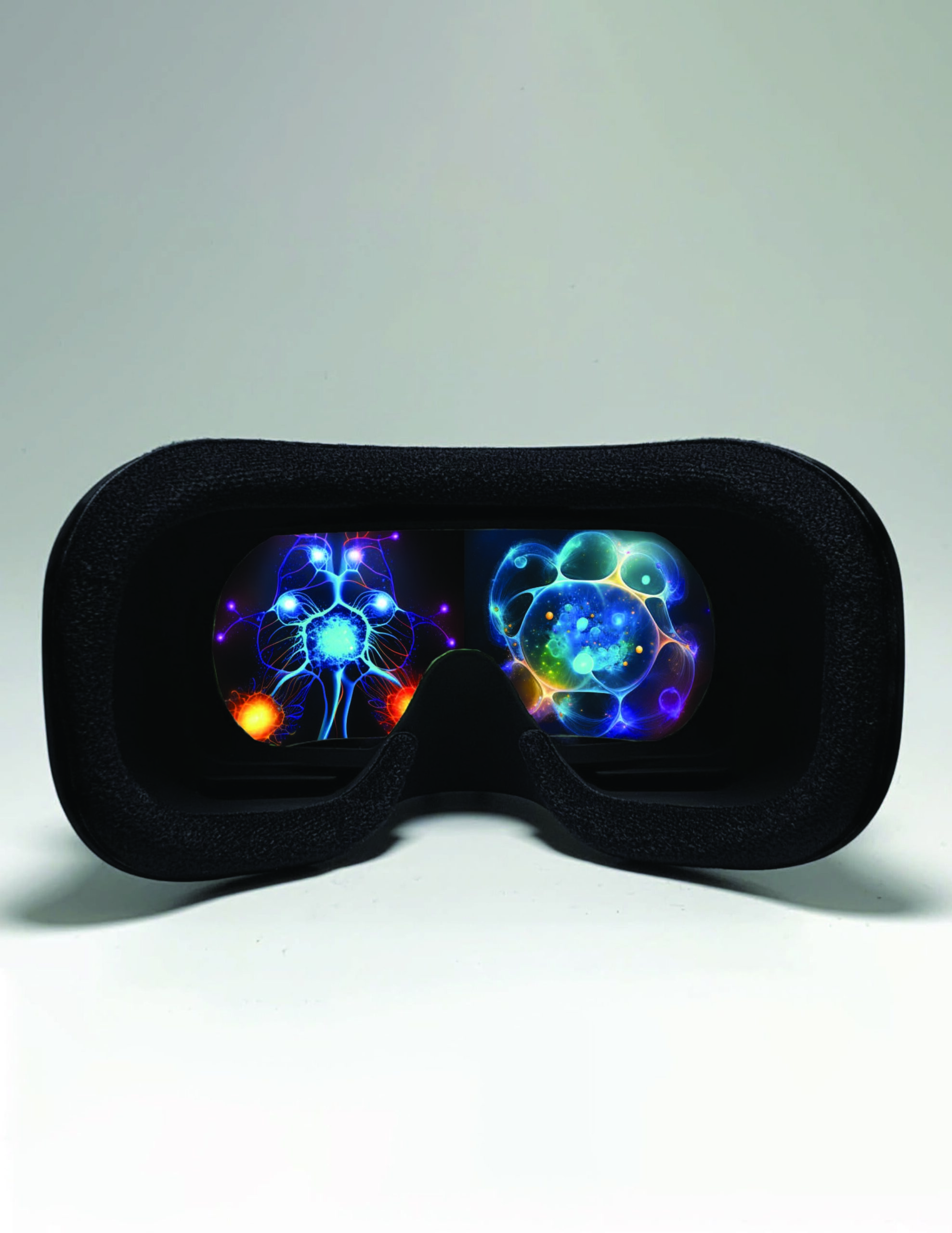This text has been reviewed in response to Science X’s editorial course of and insurance policies . Editors have highlighted the next attributes whereas making certain the content material’s credibility:
Built-in Biosciences has developed novel instruments to govern the built-in stress response (ISR), a key hallmark of growing old. The staff is utilizing optogenetics to activate the ISR in a “mobile digital actuality” system and has proven that manipulating the period and depth of this activation influences the cell’s response. This platform could be mixed with AI to establish anti-aging drug candidates. Credit score: Built-in Biosciences
Built-in Biosciences, a biotechnology firm combining artificial biology and machine studying to focus on growing old, in collaboration with researchers on the College of California Santa Barbara, immediately introduced a drug discovery platform that allows exact management of the built-in stress response (ISR), a organic pathway that’s activated by cells in response to all kinds of pathological and aging-associated circumstances.
A brand new publication, “Optogenetic management of the built-in stress response reveals proportional encoding and the stress reminiscence panorama,” authored by firm founders and featured on the duvet of Cell Programs describes a method that triggers the ISR nearly utilizing mild and demonstrates how the buildup of stress over time shifts a cell’s response from adaptation to apoptosis (programmed cell dying).
“In a really possible way, our platform places cells right into a digital actuality, making them expertise stress within the absence of bodily stressors,” mentioned Maxwell Wilson, Ph.D., a co-founder of Built-in Biosciences and Assistant Professor of Molecular, Mobile, and Developmental Biology on the College of California Santa Barbara.
“This work is a vital advance as a result of it depends on a light-activated swap to regulate the ISR, which is vital to growing old, quite than utilizing the chemical poisons which might be widespread on this subject of analysis. Our artificial biology platform permits beforehand not possible drug discovery as a result of it avoids inducing the collateral injury attributable to chemical poisons, enabling us to look at direct results of drug candidates on the cell’s stress response and carry out quick and correct goal deconvolution.”
Built-in Biosciences’ “mobile digital actuality” system adapts optogenetics, a analysis technique pioneered by neuroscientists to activate particular neurons by wiring them to fireside in response to flashes of sunshine. In Built-in Biosciences’ platform, neuroglioma and osteosarcoma most cancers cells had been genetically modified such that their ISR may reply to mild.
Built-in Biosciences has genetically modified neuroglioma and osteosarcoma most cancers cells in order that their built-in stress response (ISR), a key side of growing old, could be activated by mild. By way of this distinctive platform, the corporate has decided that transient stress results in an adaptive response that protects a cell from injury, whereas extended activation of the ISR results in cell dying, shedding mild on the processes that decide a cell’s destiny choices with age. Credit score: Built-in Biosciences
The analysis discovered that period and depth each dictate a cell’s response to the virtual-reality stress, and that the buildup of stress over time performs an necessary function in how the cell responds. Transient stress results in an adaptive response that protects a cell from injury, however extended activation of the ISR results in cell dying. Because the ISR represents a key hallmark of growing old, these findings inform the cell destiny choices that cells make as they age.
The Cell Programs paper represents the second main publication related to Built-in Biosciences. A Nature Growing older paper, “Discovering small-molecule senolytics with deep neural networks,” revealed in Might demonstrated how synthetic intelligence (AI) can be utilized to find novel senolytics, anti-aging compounds that selectively eradicate senescent “zombie” cells.
These compounds have proven promise of their skill to deal with age-related ailments reminiscent of fibrosis, neurodegeneration, and most cancers, however have confronted challenges in scientific research. The Nature Growing older paper recognized three drug candidates which have comparable efficacy and superior medicinal chemistry properties than these of probably the most promising senolytics at present beneath investigation.
By combining cutting-edge applied sciences described in these two publications—AI-driven small-molecule drug discovery and exact artificial management of aging-associated pathways—Built-in Biosciences is producing unprecedented varieties of knowledge concerning the actions and properties of their anti-aging drug candidates, considerably derisking future scientific trials that focus on age-related ailments.
“This research demonstrates an necessary pillar of Built-in Biosciences’ platform—that the corporate can use artificial biology, and particularly optogenetics, to regulate age-related mobile signaling pathways. This expertise permits for novel drug discovery efforts, permitting us to question particular elements of mobile biology that produce sooner, on-target drug screens with built-in mechanism of motion validation,” mentioned James J. Collins, Ph.D., Termeer Professor of Medical Engineering and Science at MIT.
Extra info: Taivan Batjargal et al, Optogenetic management of the built-in stress response reveals proportional encoding and the stress reminiscence panorama, Cell Programs (2023). DOI: 10.1016/j.cels.2023.06.001 Journal info: Nature Growing older , Cell Programs
Offered by Ten Bridge Communications



